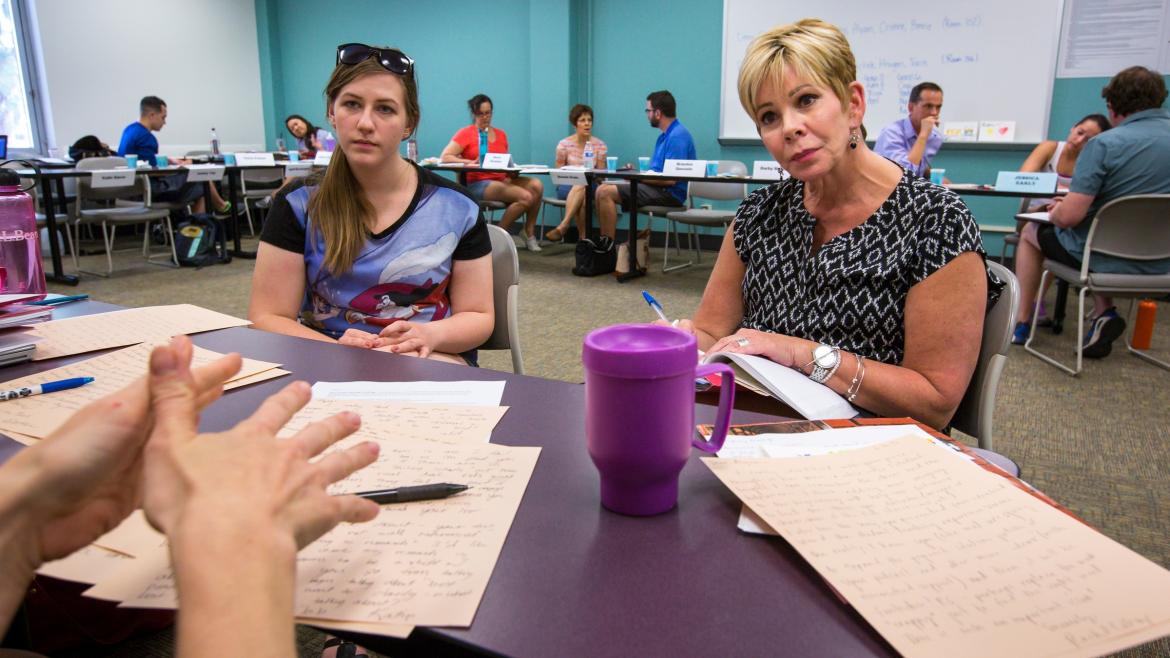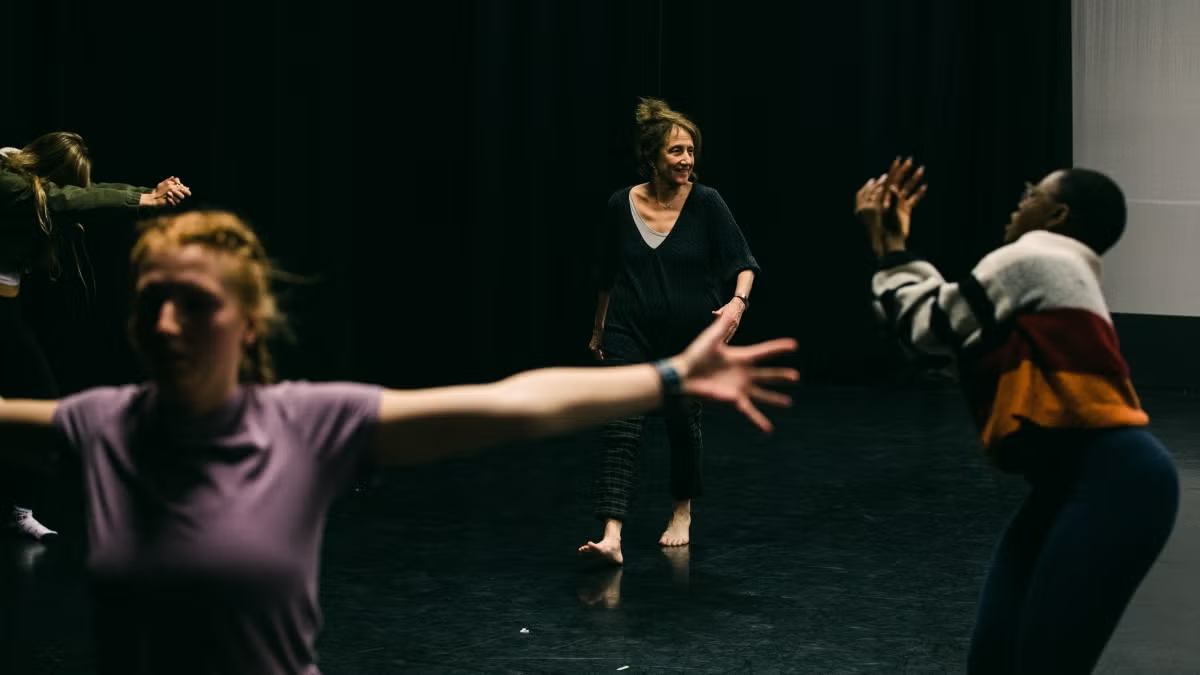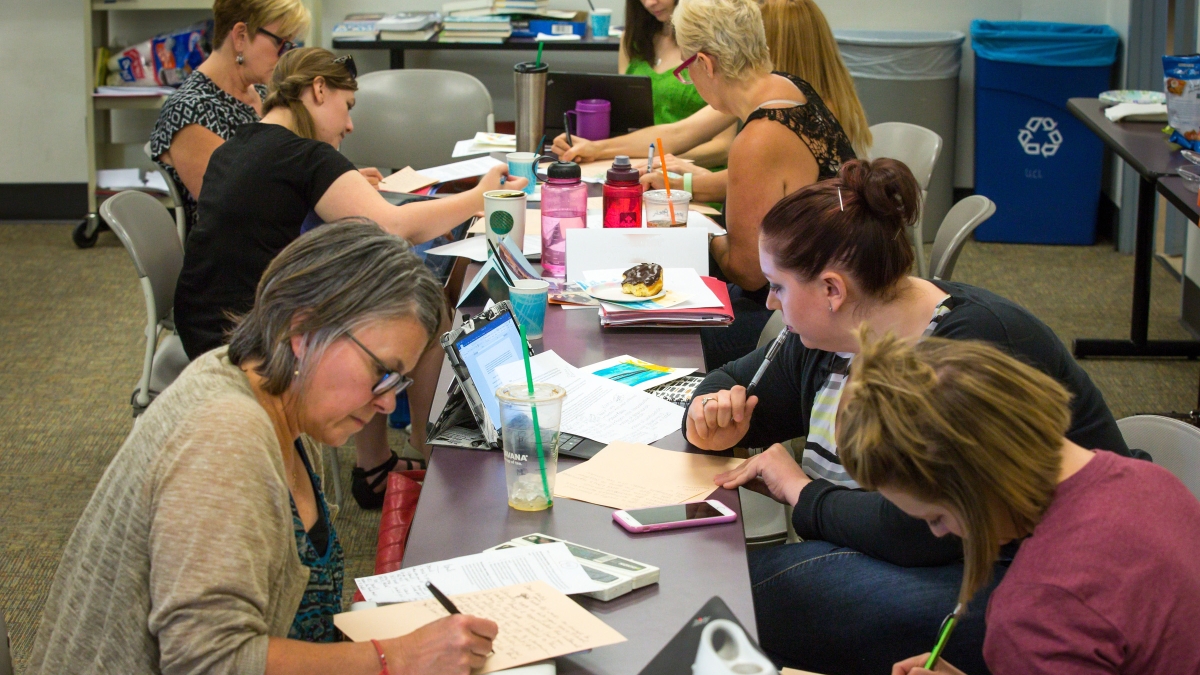Some of the most significant turning points in history began with a compelling argument.
Charles Darwin’s “On the Origin of Species.” Abraham Lincoln’s “Gettysburg Address.” Martin Luther’s “Ninety-five theses.”
Clearly the ability to express one’s opinion in a thoughtful, well-constructed manner is a powerful thing. That fact that has been further proven by a recent National Writing Project (NWP) study that found introducing argumentative writing curriculum into schools improved teaching results.
So for two weeks in June, 22 middle and high school teachers from throughout the greater Phoenix area convened at Arizona State University’s Tempe campus for the Central Arizona Writing Project 2016 Invitational Summer Institute to focus on improving their argument-writing teaching skills.
Supported by a NWP College Ready Writers Program grant, the institute is unique because it allows local teachers to experiment with a research-based teaching model while collaborating with ASU professors, past and present doctoral students, and each other.
“They get to come here to participate in workshops and work together as a professional community of writers,” said Jessica Early, co-director of the program with Christina Saidy. Both Early and Saidy are also ASU English professors.
During a workshop led by Saidy on June 16, teachers huddled together in small groups, listening to what each had written for a hypothetical podcast. Afterward, they took a few minutes to write letters to one another detailing what they liked and what needed work. Then they read their letters aloud, listened, took notes and asked for clarification.
In effect, they were demoing a lesson they could incorporate in their own classrooms.

Compadre Academy English teacher Cindy Glick (right, listening to feedback about her podcast script June 16) said the methods she has learned at the CAWP summer institute help to make argument writing “more interesting" and "more relevant” for students. Photos by Charlie Leight/ASU Now
When they went home after the workshop, their “homework” was to rewrite and record the podcast based on the feedback they received.
“This thing we’re doing right now — this peer editing — is something I adopted from a previous class I took with Dr. Saidy that I have my students do now. And it’s revolutionized the way they edit and revise their work,” said Tricia Parker, who has taught 10th- and 11th-grade English at local schools.
That may be because the way students have been “peer editing” each other’s work isn’t nearly as effective. As Saidy explained to the class, “This is something that has been documented in schools. Students aren’t really reading each other’s writing.”
Instead, they’re simply filling out checklists — not expressing what they like or don’t like, not asking how they can improve, not having an actual, engaging conversation about their writing.
Cindy Glick, who teaches English and creative writing at Compadre Academy in Tempe, said the methods she has learned in the workshops help to make argumentative writing “more interesting, more attainable and more relevant” for her high school students.
According to Mesa Westwood High School 10th-grade English teacher Katie Garza, the workshop content is relevant for teachers, too.
“Everything we do in here as writers, as teachers of writers, is something we can do in the classroom with our kids,” said Garza. “Every single thing.”
That being the goal, a part of the day is set aside solely for the teachers to prepare lesson plans and units for the upcoming school year based on the day’s exercises.
And they aren’t just taking lessons from a single source; they’re learning from each other.
Steven Arenas, who participated in the institute last year as part of the requirements for his master’s in English education at ASU, now teaches at Alhambra High School in Phoenix. He came back to participate in the institute again this year, this time as a facilitator.
“My favorite part has been breaking up into groups and being able to listen to other teachers present their demo lesson and how they teach writing in their classrooms,” he said. “So I get to learn more and steal some ideas for them.”
As the institute came to a close, many of the teachers were looking ahead to the upcoming school year with a sense of gratitude and appreciation for the experience.
“It’s been really helpful building these argument units that we’re going to take back to our classes this fall,” said Anthony Colaya, who teaches English at Dobson High School in Mesa, “and it’s been great being a part of this community of teachers working together.”
More Arts, humanities and education

A humanities link from Harvard to ASU
Jeffrey Wilson didn’t specifically seek out Arizona State University professors when it came to filling out the advisory board for his new journal Public Humanities.“It just turns out that the type…

ASU professor’s award-winning book allows her to launch scholarship for children of female shrimp traders in Mexico
When Arizona State University Associate Professor Maria Cruz-Torres set out to conduct the fieldwork for her third book, "Pink Gold," more than 16 years ago, she didn’t count on having major surgery…

Herberger Institute Professor Liz Lerman to be honored as Dance Magazine Award winner
Dance Magazine has announced that Arizona State University Herberger Institute Professor Liz Lerman will be honored as a Dance Magazine Award winner at a ceremony Dec. 2 in New York City.“I…
